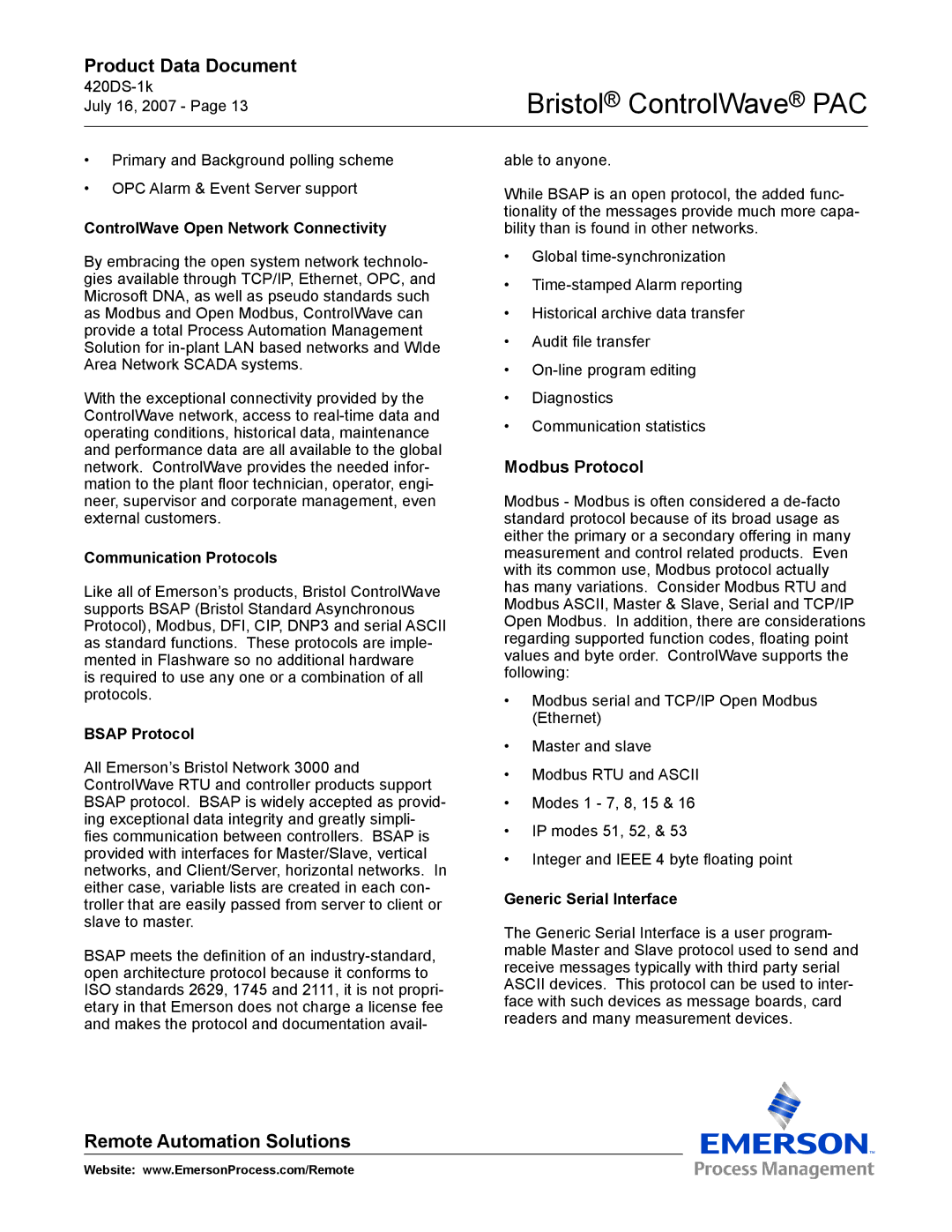PAC specifications
Emerson Process Management's PAC, or Process Automation Controller, represents a significant innovation in the field of industrial process control. As industries increasingly seek to optimize efficiency, reduce costs, and enhance productivity, PACs have emerged as pivotal in achieving these goals. Emerson's PAC combines the reliability and precision needed for critical process control applications with flexible architectures that cater to diverse industrial environments.One of the standout features of Emerson’s PAC is its robust architecture, which allows for the integration of various control strategies and protocols. This flexibility ensures that it can adapt to both continuous and batch processes, making it an ideal choice for a wide range of industries, including oil and gas, pharmaceuticals, food and beverage, and chemical manufacturing. The system supports multiple communication protocols, enabling seamless integration with existing systems, sensors, and devices.
In addition to its flexible architecture, Emerson's PAC is equipped with advanced software capabilities that enhance operational efficiency. The intuitive user interface is designed to simplify the user experience, allowing operators to easily navigate through complex control environments. The built-in analytics tools aid in real-time monitoring and performance evaluation, enabling prompt responses to any operational issues that may arise. Moreover, the system is designed with cybersecurity features to safeguard critical data and prevent unauthorized access, an essential consideration in today's interconnected industrial landscapes.
Emerson's PAC is powered by advanced technologies that provide high-speed processing and extensive data handling capabilities. This ensures that operators receive timely alerts and can perform quick analysis, leading to informed decision-making and improved productivity. The use of cloud computing further enhances the capabilities of PAC by enabling remote access and management, thereby eliminating the limitations of traditional onsite controls.
In summary, Emerson Process Management's PAC embodies cutting-edge technology tailored for modern industrial needs. Its main features, including flexible architecture, user-friendly software, high-speed processing, and robust security, position it as a reliable solution for enhancing process automation. As industries continue to evolve, Emerson’s PAC will undoubtedly play a critical role in shaping the future of process management, ensuring that organizations can operate efficiently and stay competitive in an increasingly complex market.

